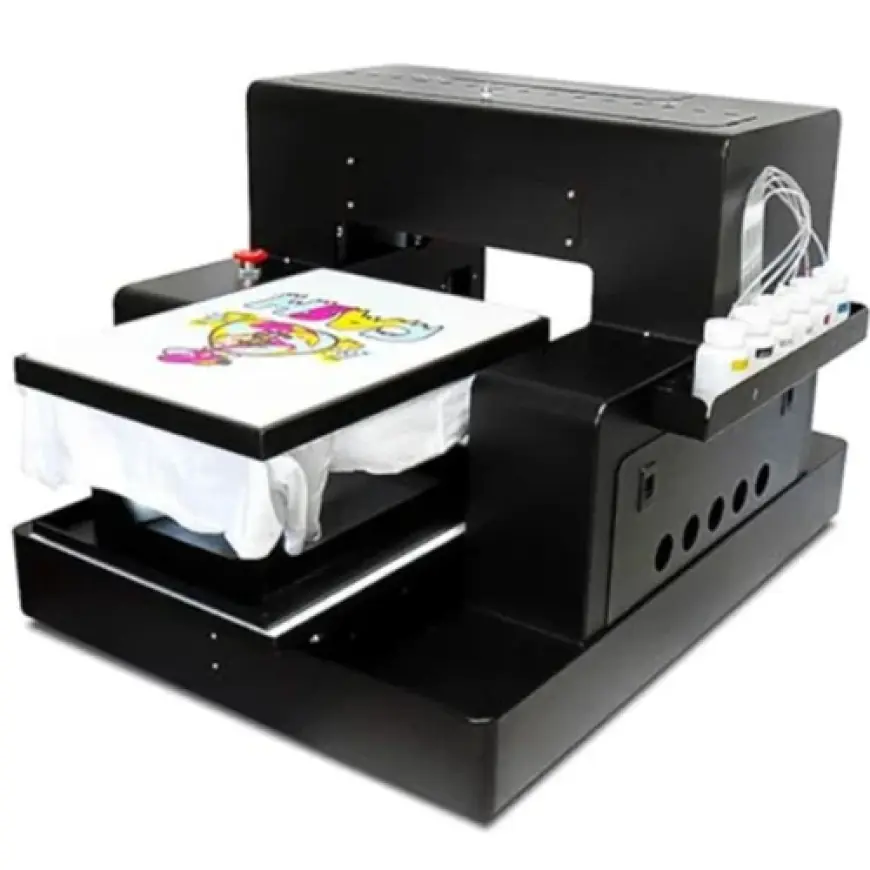How to Keep Your DTF Printer Running Smoothly Year-Round
By following the tips above and developing a reliable routine, you can ensure your DTF printer stays in peak condition and delivers professional-grade results throughout the year.
Direct-to-Film (DTF) printing has revolutionized the custom apparel industry by providing a versatile, vibrant, and cost-effective method for producing high-quality prints on various fabrics. However, to ensure consistent results and avoid costly downtime, proper maintenance of your DTF printer is essential. Like any precision equipment, your DTF printer requires care and attention throughout the year—regardless of the season. In this blog, we’ll walk you through practical tips to keep your DTF printer operating at its best all year long.
1. Daily Maintenance Is Non-Negotiable
The foundation of smooth DTF printing lies in daily upkeep. No matter how advanced your printer is, neglecting routine maintenance can lead to clogged print heads, ink inconsistencies, and print defects.
Key daily tasks include:
-
Cleaning the printhead surface to prevent nozzle blockages.
-
Checking and cleaning the capping station and wiper blade.
-
Running a nozzle check before starting print jobs.
-
Shaking white ink bottles gently to prevent pigment separation.
Taking just 10–15 minutes each day for basic care can significantly extend the life of your machine and ensure print quality doesn’t decline.
2. Control the Environment
Environmental factors such as temperature and humidity have a major impact on DTF printers. Ink formulations and film adhesives are sensitive to climate changes, which can affect their consistency and performance.
Ideal conditions:
-
Temperature: 20°C to 25°C (68°F to 77°F)
-
Humidity: 40% to 60%
Too much humidity can lead to ink bleeding, while low humidity increases the risk of static and printhead clogs. Use a hygrometer and air conditioning or humidifiers to maintain a stable workspace climate.
3. Use High-Quality Consumables
Not all films, inks, and powders are created equal. Substandard materials can cause frequent jams, poor color output, or even damage your printer components. Always use trusted brands for:
-
PET transfer films
-
DTF inks (especially white ink)
-
Hot-melt adhesive powders
Inferior products may save you a little upfront but can lead to costly repairs and reprints later. It’s better to invest in reliable materials that are designed specifically for DTF systems.
4. Perform Weekly Deep Cleaning
In addition to daily wipe-downs, your printer deserves a deeper clean at least once a week. This includes:
-
Flushing the ink lines with cleaning solution (if recommended by the manufacturer)
-
Cleaning around the printhead more thoroughly
-
Inspecting the dampers and capping station for wear and tear
-
Lubricating moving parts if needed
A weekly routine helps prevent the buildup of dried ink and keeps all components functioning properly.
5. Monitor Ink Levels and Circulation
DTF inks, especially white ink, can settle or coagulate if not properly circulated. Many printers come with built-in agitation systems, but manual checking is still crucial.
Best practices:
-
Shake white ink cartridges or bottles gently every day.
-
Keep an eye on ink levels—low ink can introduce air bubbles and damage the printhead.
-
Refill inks only in a clean, dust-free environment to avoid contamination.
Also, ensure your ink circulation system (if your printer has one) is working as intended to prevent settling in the lines.
6. Handle Transfer Film with Care
Transfer film may seem like a simple consumable, but improper storage or handling can introduce static, dust, or moisture—leading to poor transfers or uneven adhesive application.
Tips:
-
Store film in a cool, dry place.
-
Always handle by the edges to avoid fingerprints.
-
Use anti-static gloves if possible.
Also, ensure film rolls are properly loaded into the printer to avoid skewing or jamming during printing.
7. Regularly Update Software and Firmware
Printer manufacturers often release updates to improve stability, fix bugs, or enhance compatibility with RIP software. Keeping your system up to date ensures your printer functions efficiently with the latest improvements.
Before updating, make sure:
-
You back up existing settings and profiles.
-
You follow the manufacturer’s update instructions carefully.
Updated firmware can often lead to smoother operations, faster print speeds, and better color calibration.
8. Schedule Seasonal Maintenance Checks
At the beginning of each season—especially summer and winter—schedule a more comprehensive inspection. Seasonal changes may bring different challenges, such as higher dust levels in summer or static electricity in winter.
What to inspect:
-
Condition of printhead, capping station, and ink dampers.
-
Belt tension and mechanical movements.
-
Software settings that may need adjusting for new temperature/humidity conditions.
These check-ins help preempt issues that could emerge from changing environmental conditions.
9. Keep a Maintenance Log
A maintenance log is an underrated tool for any DTF printer operator. Recording daily, weekly, and seasonal tasks helps you track trends, identify recurring issues, and keep everyone on the same page—especially in a shared workspace.
Log entries should include:
-
Date and time of maintenance
-
Tasks completed
-
Any issues noticed
-
Materials used
It’s a simple step that pays dividends in uptime and performance.
10. Know When to Call in the Experts
Even with the best maintenance routine, occasional issues may arise that are beyond your scope. Don’t hesitate to call a technician or support team if:
-
Your prints suddenly degrade despite cleaning.
-
The printer stops responding or shows error codes.
-
You suspect hardware damage.
Trying to fix advanced problems without training can cause further damage. Professional support can save time and money in the long run.
Final Thoughts
A DTF printer is a powerful asset in any print shop—but only if it's treated with care and attention. Consistent maintenance, high-quality consumables, and climate control are the three pillars of long-lasting performance. By following the tips above and developing a reliable routine, you can ensure your DTF printer stays in peak condition and delivers professional-grade results throughout the year.
If you invest time in preventive care today, you’ll save on repairs and downtime tomorrow—and that’s what keeps your business running smoothly.

What's Your Reaction?
 Like
0
Like
0
 Dislike
0
Dislike
0
 Love
0
Love
0
 Funny
0
Funny
0
 Angry
0
Angry
0
 Sad
0
Sad
0
 Wow
0
Wow
0


















































